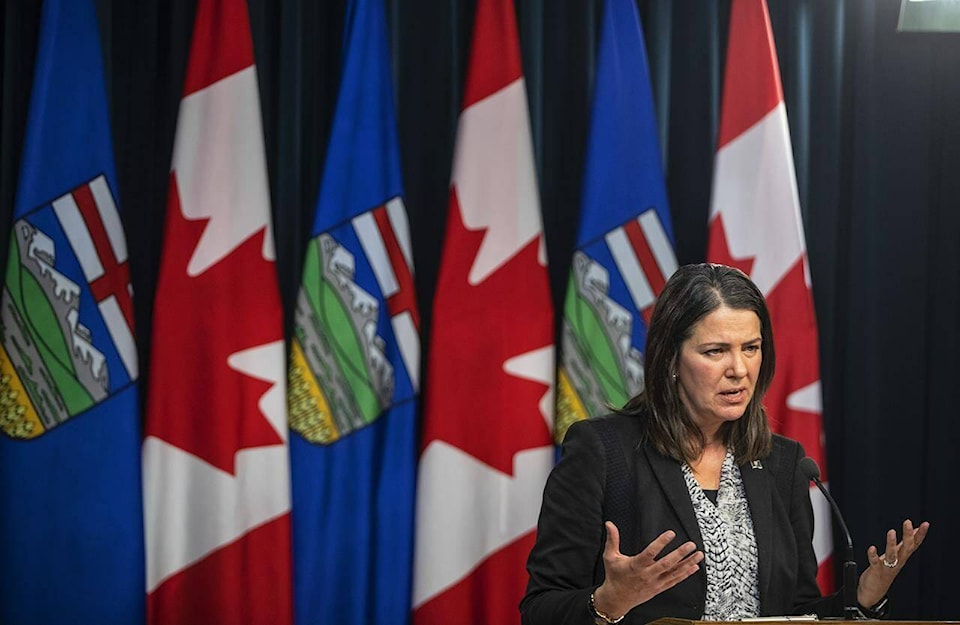Health care upheaval promised by Premier Danielle Smith is not going unnoticed in other parts of Canada ready to lure staff away from Alberta.
On Monday, the CEO of Ottawa’s Children’s Hospital of Eastern Ontario, tweeted: “If you feel discouraged because you’re being blamed for healthcare problems rather than being thanked for 2 ½ years of tireless work … We’d welcome your dedication and expertise at @CHEO!”
#Alberta Health Services staff: If you feel discouraged because you're being blamed for healthcare problems rather than being thanked for 2 ½ years of tireless work...
— Alex Munter (@AlexMunter) October 24, 2022
We'd welcome your dedication and expertise at @CHEO! 🙌
Apply here: https://t.co/AXkACoZIbY.
#yeg #yyc pic.twitter.com/CWvxxCdZup
Monday was also the day that the United Nurses of Alberta, Alberta Union of Provincial Employees, Canadian Union of Public Employees, Health Sciences Association of Alberta and Friends of Medicare united to demand a meeting with the province to address the health care staffing crisis.
Cameron Westhead, second vice-president with United Nurses of Alberta, said nurses are eager to share their ideas like hiring bonuses, lower tuition for nursing students, welcoming more international nurses and expanding post-secondary nursing opportunities.
“We want to do everything we can to make it attractive so graduates stay here rather than being wooed to other provinces where they’re talking about giving nurses more respect and a better working environment,” Westhead said.
Related:
He said morale among nurses is low, and the pressure doesn’t stop at the end of their shifts.
“Nurses are being asked to do mandatory overtime. We’ve started to call it guilt overtime. Nurses know how short-staffed the units are so on their days off they get multiple calls and texts to come in and work extra shifts.”
He said it’s difficult for hospitals outside Calgary and Edmonton to attract staff, but even in those cities more nurses from agencies are needed in emergency departments and intensive care units, areas where they traditionally weren’t used.
Smith has said the staffing shortages were “manufactured by the bad decisions of Alberta Health Services, and to expect it to be “a bit bumpy” while she reorganizes the entire governance structure of provincial health services before the end of January.
Improvements to the health care system can certainly be made, but a more surgical approach is needed, not a shotgun approach, Westhead said.
“Everyone’s wondering if their neck is on the chopping block. Creating this kind of fear in the health care system where people are generally trying to do the best they can to make sure patients get the care they need, is the last thing we need is more stress.”
Related:
UPDATE: Central Alberta post-secondary institutions get boost from province
Earlier this year, to help post-secondary institutions churn out more healthcare workers, the province announced significant funding.
Red Deer Polytechnic will add 360 seats in the Bachelor of Science in Nursing Degree, Practical Nurse Diploma, and Licensed Practical Nurse to Bachelor of Science Nursing Transition Program over the next three years.
In the Bachelor of Science Nursing program, another 72 seats will be added to the existing 96 existing seats in 2022-23, followed by 48 more in both 2023-24 and 2024-25.
The Practical Nursing Diploma program has 64 seats and 48 more will be added in 2022-23, along with 48 more in both 2023-24 and 2024-25.
The Licensed Practical Nurse to Bachelor of Science in Nursing Transition Program has eight seats available for 2022-23 (spring intake), and will add 24 more in both 2023-24 and 2024-25.
—With files from The Canadian Press
